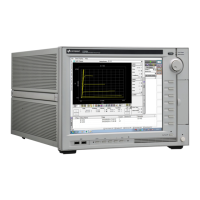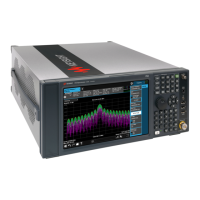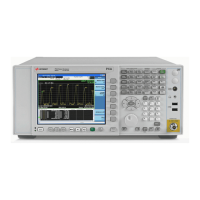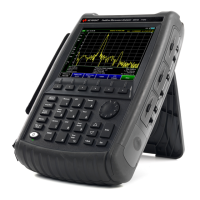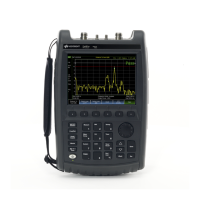
Do you have a question about the Keysight Technologies IntegraVision PA2201A Series and is the answer not in the manual?
| Vertical Resolution | 8 bits |
|---|---|
| Output Power | Not applicable |
| Dynamic Range | Not applicable |
| Impedance | 50 Ω |
| Power Supply | 100-240 VAC, 50/60 Hz |
| Number of Channels | 2 |
| Input Impedance | 1 MΩ || 50 Ω |
| Input Coupling | DC, AC, GND |
| Trigger Types | Edge, Pulse Width, Pattern |
| Connectivity | USB, LAN |
| Operating Temperature | 0°C to 50°C |
Explains hazard and safety notices, including CAUTION and WARNING statements.
General guidelines for safe product operation and handling.
Importance of proper grounding for electrical safety to prevent shock.
Warnings regarding fuses, explosive atmospheres, and handling damaged equipment.
Procedures for self-tests and warnings for AC power mains measurements.
Safety advice for using transformers and handling hazardous voltages.
Information on overload indications, operating conditions, and measurement limits.
Specific safety warnings related to connecting voltage inputs.
Details on configuring and using internal current measurement inputs.
Details on connecting and configuring external transducer inputs.
Overview of the instrument's front panel buttons, knobs, and display.
Overview of the rear panel connectors, ports, and inputs.
Detailed explanation of the function of each front panel button.
Accessing and performing various power analysis functions.
Managing and configuring input channels and channel groups.
Adjusting trigger levels and modes through the touchscreen interface.
Configuring voltage and current signal inputs for measurement.
Adjusting horizontal axis parameters like scale, position, and delay.
Steps for connecting and configuring voltage inputs for measurement.
A typical wiring diagram for connecting an external current probe.
Detailed steps for configuring an external current probe.
Information on using the instrument's internal current shunts.
Steps for setting up and connecting internal current shunts.
Procedure for setting up measurements using internal current shunts.
Overview of controls for managing instrument channels.
Applying filters to remove unwanted frequency content from signals.
Overview of controls for managing the horizontal axis of waveforms.
How the auto-scale feature optimizes waveform display.
Detailed explanation of the auto-scale process and its steps.
Compensating for signal propagation delays using channel skew.
Grouping channels for applications like three-phase measurements.
Configuring which signals (voltage, current, power) appear on the display.
Accessing and viewing the phasor diagram for phase analysis.
How to display and access the phasor diagram feature.
Understanding the elements and meaning of the phasor diagram.
Explanation of the calculated values displayed with the phasor diagram.
Setting the source and appearance of the phasor diagram.
Configuring instrument communication interfaces (LAN, USB).
Accessing and utilizing the instrument's web server interface.
Setting instrument preferences and user-specific options.
Steps for setting up the instrument's LAN connection.
Using DHCP or AutoIP for automatic network configuration.
Manually setting IP address, subnet mask, and hostname.
Functions available via the web server and how to access it.
Accessing the instrument's remote front panel via a web browser.
Customizing the behavior and function of the Quick Action key.
Basic information about trigger sources, slopes, and levels.
Managing the instrument's data acquisition system.
Saving measurement data to a USB drive for later analysis.
Setting the trigger level for edge detection on signals.
Selecting between Auto and Wait for Trigger modes.
Procedure for logging data to a USB drive, including settings.
Setting duration, interval, channels, and CWA parameters for datalogging.
Introduction to automatic waveform measurements.
How to use cursors for custom measurements on waveforms.
Understanding Continuous Whole-Cycle Analysis principles.
Formulas and calculations for CWA measurements.
Steps to configure and perform automatic waveform measurements.
Detailed steps for performing automatic measurements.
Explains measurement points for voltage, current, and power signals.
Defines points for time-based measurements like period and duty cycle.
Measuring time differences between signal edges.
Measuring phase differences between signals in degrees.
Measuring the peak value of an FFT spectrum.
Calculating the area under a waveform.
Defining vertical levels for taking measurements.
Showing statistical data for waveform measurements.
Accessing options like Reset Statistics and Max Count.
Explanation of vertical (X) and horizontal (Y) cursors.
Step-by-step guide to using cursors for measurements.
Explains the principles of Continuous Whole-Cycle Analysis (CWA).
How measurement window and sync source affect CWA analysis.
The critical role of the sync source in CWA analysis.
Settings for CWA analysis including sync source, noise rejection, and offset.
How CWA is applied in Power Quality and Harmonics analyses.
Configuring CWA for specific analysis types.
Configuring CWA for Energy analysis.
Configuring CWA for Efficiency analysis.
Common CWA issues and their solutions.
Understanding AC power quality metrics.
Measuring total harmonic distortion and harmonic RMS values.
Measuring energy consumption over time.
Calculating the efficiency of power supplies.
Analyzing current squared over time to assess heating effects.
Detailed explanation of power quality metrics and analysis.
Procedures for updating the instrument's firmware.


